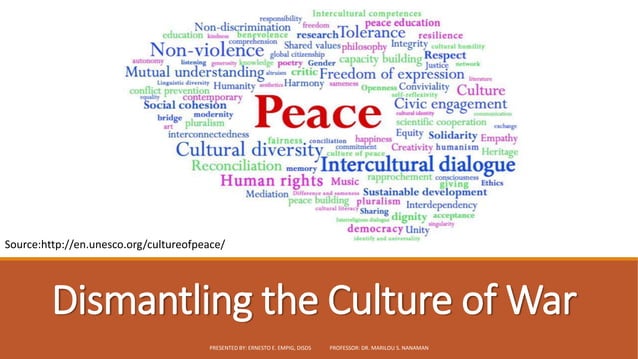
No Climate Justice Without Ending
Militarism: Groups Are Organizing!
Tom Vermolen / Fridays for Future Newsletter
(May 25, 2025) — A silent yet colossal contributor to environmental destruction remains largely unaddressed: militarism. While much attention is given to industrial emissions, fossil fuels, and deforestation, the environmental and climate costs of warfare and military operations are consistently sidelined in international climate negotiations. However, the climate consequences of modern war are extensive, long-lasting, and deeply alarming.
The environmental consequences of war and the carbon footprint of military operations have been systematically overlooked for decades. Militarism, propped up by powerful military-industrial complexes in the dominating, inflicts long-lasting devastation on ecosystems, pollutes air and water, and releases staggering volumes of greenhouse gases. While the human cost of war is widely acknowledged, its ecological toll remains buried—both literally and figuratively—beneath the rubble of conflict zones.

Militarism Destroys Climate
When the Kyoto Protocol was adopted in 1997, it specifically excluded military emissions from climate obligations. Nearly two decades later, the Paris Agreement in 2015 continued this trend. It allowed countries to voluntarily report military emissions. This loophole has enabled major military powers to escape accountability for the environmental damage caused by their armed forces. The result is an incomplete understanding of the sources fueling climate change.
In reality, the global military sector is one of the largest consumers of fossil fuels on Earth. The military-industrial complex accounts for an estimated 5.5% of global greenhouse gas (GHG) emissions. If considered as a single nation, the world’s militaries would rank as the fourth-largest emitter of greenhouse gases, between Russia and India. The United States military alone emits more carbon dioxide annually than over 150 countries, including Denmark, Sweden, and Portugal.
Oil and gas drives this immense carbon footprint Military vehicles, fighter jets, warships, and the global logistics network needed to support them require vast amounts of fuel. In wartime, the emissions spike even further. Explosions, air raids, and artillery fire release not only carbon dioxide but also toxic chemicals and particulates into the atmosphere. The US military’s air campaigns over the past two decades have involved the deployment of hundreds of thousands of bombs and missiles, each contributing to a growing climate burden.
Even in the absence of active conflict, militaries remain some of the most environmentally destructive institutions. The United States operates more than 742 military bases across 82 countries. The day-to-day operations of these bases—running vehicles, powering facilities, training personnel—consume massive amounts of energy. The Department of Defense is the single largest institutional consumer of fossil fuels in the world. Its 566,000 buildings and global logistics network use oil and gas not just for war, but for routine operations, including surveillance, supply chain logistics, and exercises.
Similar patterns are seen globally. In the United Kingdom, the Ministry of Defence is the government’s biggest fossil fuel consumer. Russia, China, India, Israel, and Saudi Arabia also maintain large military forces and infrastructure that contribute significantly to national emissions, often without transparency or public accountability.

Militarism Destroys Ecosystems
Beyond emissions, war reshapes entire ecosystems, often irreparably. Military operations leave behind scorched forests, poisoned rivers, and depleted soils. The Vietnam War saw the deployment of Agent Orange across more than five million acres of forest and half a million acres of farmland, devastating biodiversity and continuing to impact human health generations later.
In Afghanistan, nearly 95% of the country’s forests have disappeared, due to a combination of logging, conflict, and environmental neglect. Iraq’s Mesopotamian Marshes, once the largest wetland ecosystem in the Middle East, were reduced to just 10% of their historical size after decades of warfare and damming.
In times of conflict, biodiversity collapses. Wildlife is hunted for food, habitats are destroyed, and species are driven toward extinction. Studies have shown that large mammal populations can decline by up to 90% in areas affected by prolonged warfare. In the Democratic Republic of Congo, conflict has decimated elephant populations and nearly wiped out the white rhino. Even distant ecosystems are affected. During World War II, rats introduced by military ships devastated the fragile ecosystems of Laysan Island in the Pacific, leading to the near-extinction of native bird species and the spread of invasive plants.
Wartime pollution also seeps into every layer of the environment. The use of depleted uranium (DU) munitions, as seen in Iraq during the Gulf War, leaves a toxic legacy that can last centuries. These munitions contaminate soil and water, and their radioactive particles have been linked to increased rates of cancer and birth defects. In Lebanon, the 2006 bombing of a coastal power plant released 15,000 tons of oil into the Mediterranean Sea, killing marine life and crippling local fishing industries. In many former war zones, discarded or unexploded ordnance continues to maim civilians and pollute land and water.

Climate Cost of Rebuilding after War
The environmental toll of militarism does not end when the guns fall silent. In post-conflict regions, the process of reconstruction carries its own ecological costs. Rebuilding homes, roads, schools, and infrastructure requires vast amounts of raw materials such as steel, cement, wood, and sand. Cement alone is responsible for about 8% of global carbon emissions.
In Syria, estimates suggest that reconstructing the housing sector alone could release over 22 million metric tons of carbon dioxide. This does not account for the emissions involved in transporting materials, powering construction machinery, or rebuilding utilities—all of which are typically fueled by fossil energy.
The situation in Gaza offers another tragic illustration. More than 60% of Gaza’s buildings and infrastructure have been damaged or destroyed. Over 75,000 tons of explosives have been dropped on the region, creating an estimated 42 million tons of debris, much of it contaminated by unexploded ordnance and hazardous materials. The cost of reconstruction is projected to exceed $80 billion and, under current conditions, could take up to 350 years. Even in the most optimistic scenario, rebuilding Gaza would still take several decades, exacting a heavy climate and environmental price.

Climate Imperative:
Dismantling the War Machine
A dominant narrative—promoted by media and political elites—is that war is sometimes necessary to defend sovereignty, secure peace, or combat terrorism. Yet history consistently shows that war resolves little. Instead, it fuels cycles of destruction, displaces communities, deepens ecological degradation, and encourages costly, unnecessary militarisation.
At its core, militarism serves the interests of the military-industrial complex—a global network of defense contractors, corporate elites, and governments who profit from conflict. These actors have no vested interest in peace, sustainability, or climate justice. Their interests lie in perpetual war, weapons sales, and the plunder of natural and human resources.
To truly address the climate crisis, we must confront the devastating impacts of militarism. Military emissions must be included in climate agreements. Nations must be held accountable for the ecological damage of war. Disarmament must be recognized not just as a peace strategy, but as an essential climate action.

A Call to Conscience through Organizing
Groups are coming together to expose the linkage between militarization and climate threat, or peace and climate justice. Sweden has seen the formation of the Peace and Climate Justice Network. In Africa over 30 climate joins have come together to plan a peace and climate justice conference in August 2025. Some 7 petitions across five continents are urging peace and climate justice. Endorsers or individuals can sign here.
Scientists, engineers, and academics have a vital role to play too. See for example the International Union of Scientists Against Militarism spreading through Europe or the Breakthrough Science Society gaining support in India. Those who lend their skills to the development of war technologies—whether through weapons development, surveillance technology, or logistics and support systems—must ask themselves: is their work contributing to the betterment of humanity or to its destruction? We must choose to redirect our intellect, energy, and resources toward building a more just, sustainable, and peaceful world. A world where science serves life, not death.
Ending militarism is not only a moral imperative but also an ecological necessity. There is no climate justice without dismantling the machinery of war. The survival of our planet depends on it.